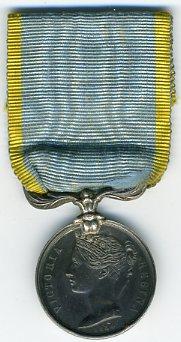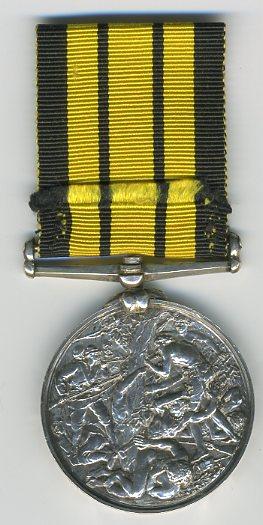
Bernhard H.Holst
-
Posts
1,481 -
Joined
-
Last visited
Content Type
Profiles
Forums
Blogs
Gallery
Events
Store
Posts posted by Bernhard H.Holst
-
-
Hello Jock.
This should be interesting reading.
The Arbeitsgesetz or labor laws are just that laws governing all aspects involving labor i.e. youth labor and such.
Bernhard H. Holst
0 -
Hello Hugh.
Thank you for posting this reminder.
What the very interesting article to which you placed a link ( thank you ) did not state clearly is that the later general Balck served during WW I and still post war in the Jg.Bataillon (Hann.) 10. This battalion had the distinction together with only two other regiments to wear the campaign cuff title "Gibraltar" and the battle honors " Peninsula, Venta Del Pozo and Waterloo" honoring the Kings German Legion's exceptional service prior to 1816 when it was dissolved.
While general Balck was the most distinguished officer who had served in this battalion thus continuing a career path of a forebear, a good number of others also had an outstanding career during WW II . General Guderian readily comes to mind though he served on detached duty during WW I as does Gen.d.Gebirgstruppe H. Kreysing. There were others. I have posted a listing under "Jg.Bataillon ( Hann.) 10 later distinguished officers" under Prussia. Unable to link this interested readers should be able to locate it.
Thank you again for pulling a deserving officer from the shadows.
Bernhard H. Holst
Hello Andy.
Interesting video showing Gen.Speidel at Sandhurst. Quite a career and luck to have escaped the noose in 1944.
Bernhard H. Holst
0 -
Hello Richard.
Ref.# 73,
signature of Oberst Stigell.
Bernhard H. Holst
0 -
Hello Jim.
Thank you for showing this to us.
BTW: It is my personal choice as favorite German medal. Its simplicity and very underrated importance ( only 1,700 or so awarded ). Belated recognition as all surviving and still living recipients were designated as retired Lieutenants of Landwehr sometime in the 1930's.
Bernhard H. Holst
0 -
Hello Jim.
Beautiful piece.
BTW: I had the distinct privilege some years ago to view a surviving Breslau ( then part of Prussia) newspaper announcing the creation of the Iron Cross to the public.
Thanks for showing it to us.
Bernhard H. Holst
0 -
Hello Jim.
Nice group and I am envious as well. Thanks for showing us.
Bernhard H. Holst
0 -
-
Hello Tony.
Thanks for posting this moving account from the German side when the end of the war must have been in sight to most German soldiers. The German army suffered great losses in early August 1918 during an Allied attack ( called the Black Day or der schwarze Tag of the German Army) with apparent indications of a lessening discipline and an increasing willingness to early surrender.
The photo shows the MG 08/15 so the photo must have been taken after the introduction of this weapon which if memory serves was in 1916. So young and how many made it back.
Bernhard H. Holst
0 -
Hello Jock.
Congratulations.
Bernhard H. Holst
0 -
Hello Jock.
A burial. I believe Belgian officers. Church in the background.
The German soldier seems to wear flying boots. Are the German military personnel prisoners, I wonder?
Certainly unusual photos.
Bernhard H. Holst
0 -
Hello readers.
I thought someone would remind us of this fateful date when Colonel Graf von Stauffenberg tried to put an end to the war by placing an explosive charge during a briefing with Hitler on July 20, 1944.
The attempt was unsuccessful. I believe discussions about this event shall continue for a long time to come.
This writer's recollection of the event is hazy , at age of 12 while having general access to radio news nothing really significant remains in my memory.
Bernhard H. Holst
0 -
Hello readers.
It seems that I caused some misunderstandings when commenting or answering questions regarding the origins of arms used during the French phase of the Indochina War ( 1945 t0 1954 )
The time span I referred to involves only the period 1952 to 1953 and again early 1954 to the end of armed conflict in the north of Vietnam towards the end of July 1954.
Weapons recovered by us from the enemy, communist or then called Vietminh troops consisted of French, U S or Soviet made weapons.
Arms utilized by French or associated troops ( National Arny of Vietnam, Vietnamese French controlled home guards and such) in my personal experience or observation were French or US made.
The magazine pictures shown by Chris of German WW II weapons in use by Foreign Legion units in Vietnam are not disputed by me. My recollection points to a very drastic tendency by the French military to streamline weaponry ( and equipment ) to ease replenishment in ammunition etc.
Inefficient weapons or considered as such were replaced by other available ones. What comes to mind is the initial use of French 50 mm mortars in our company to be disused because of faulty/aged rounds. They were replaced by the very efficient rifle grenade launchers, easy to aim with reasonable range.
Bernhard H. Holst
0 -
Hello Michael and Hugh.
First a thank you to Michael to resolve the matter of the unit insignia. This unit as well as all other support units I had mentioned above were dissolved in 1955 and 1956 at the latest. This caused a "glut" in N.C.O.'s which all had to be placed somewhere and contributed to a slowdown in the advancement of lower ranks ( including this writer's promotion after successfully participating in a selection/training course for future N.C.O.'s ).
Hugh, in regards to the dragon vs. Alligator:
a good number of regimental and other formation's unit insignia of the French Foreign Legion while on active service in Vietnam incorporated a dragon as did the old order of the Dragon of Annam medal of which I posted a sample on this forum sometime ago. While Alligator was the commonly used name for the L.V.T. in use by I have not seen it in any unit insignia except some few, very few Escadron crest not generally in wear. They were tolerated more than any official sanction given. In my unit First ( after 100 hours of operation) and Second Echelon ( after 1,000 hrs of operation) maintenance and repairs were done by our mechanical personnel. If heavy components ( transm. engine or such ) failed upon removal they were shipped to an appropriate repair outfit. We had no dedicated repair outfit which belonged or was attached to our Amphibious Group.
Thanks for your interest in the matter.
Bernhard H. Holst
0 -
Were German WW2 weapons common finds in Indochina then? If so, what did you see the most of?
Hello Paul.
I was somewhat puzzled by your question. During my time and location, Red River Delta in Northern Vietnam then called Tonkin , recovered weapons were French or U S made. Some Soviet weapons as well with which regular Viet Minh units were equipped. Never encountered German-made weaponry. The photos posted illustrate only such French or US made ones.
BTW: On one occasion while operating with a French unit composed mainly of Vietnamese troops I saw one soldier equipped with a Sturmgewehr. Upon my question I was told that the weapon had been brought from Europe and that they still had 3,000 rounds of ammunition.
Bernhard H. Holst
0 -
Hello Andreas.
The main color scheme is certainly French Foreign Legion colors green/red as is the 7 flames grenade.
The toothed wheel points to transportation as does the blue color used. The dragon pictured points to Vietnam/ Indochina where during the French phase of the Indochina War ( 1945 to 1954 ) the Legion had numerous support units such as wheeled and tracked vehicle repair, transportation-, ferry- and engineering units. The unit abbreviation 2 C.R. does not ring a bell. Perhaps 2. Compagnie de Reparation?
Bernhard H. Holst
0 -
Hello Paul.
As Kevin ( hucks 216) mentioned above, some elements of the 22.Inf.Div. stationed on Crete were detached and sent to North Africa where they formed a Kampfgruppe ( Inf.Regt. 47 and artillery etc elements) under the command of Oberst Buhse ( Knights Cross ) The German troops stationed on Crete wore tropical uniforms. An uncle of mine who served in the arty regt.22 of that division from before the war throughout the duration certainly wore tropical uniform as photos show.
Bernhard H. Holst
0 -
Hello.
I agree with Chris that the word is Vereidigt ( sworn in ). What threw me is that the page dedicated to awards was used. That led me to puzzle out a possible medal or such.
Bernhard H. Holst
0 -
Hello Chip.
I was aware of the way to apply some coding but was not very successful. So I do as you write ae, ue etc
Bernhard H. Holst
0 -
Hello Paul.
I read his last name as Maennel ( a Umlaut ) do not know how to apply Umlaut on my keybord.
Bernhard H. Holst
0 -
Hello Kevin.
I will steal Jock's thunder :
1 Feindbeschusstag
I agree with your statement about Flak personal documents being somewhat overlooked.
Bernhard H. Holst
0 -
Hello Jock.
Thank you for showing this document. One sees mostly military promotion docs which do not have such elaborate gold leaf decoration, at least not the one in my collection.
Bernhard H. Holst
0 -
Hello Hugh and Paul.
Thank you for the additional information which nicely rounds off the little information I had available.
The medal has apparently been polished and some patina remained in/on the rim inscription making reading somewhat difficult.
The reverse would indeed be a no-no today. I was brought up believing the combat against locals in then German South-West and East African colonies were necessary and cleanly fought until...
Bernhard H. Holst
0 -
Hello readers.
A recent auction had this medal described as the campaign medal for East- and West Africa. As Peter Duckers in his book British Military Medals, 2009 writes that this medal does not come without a clasp and the offered one shows no clasp I was wondering. But with the reverse described by Peter Duckers as one of the most beautiful ones devised I took the chance , bid and obtained it.
Having received it I found the rim inscription to read " H. Thompson Py O??2cl HMS Himalaya". A search revealed the "Himalaya" to have gained battle honours in Ashantee 1873-74. So it seems to be the campaign medal for the Ashanti ( Ashantee ) campaign of 1873/74 and not for any East or West Africa campaign.
Bernhard H. Holst
0 -
Hello Paul.
I cannot help with the signature but here is the inscription in red:
lt. G.M.K. Sammelstelle I v. 17.3.17 ztg 3 Monate g.v.H. dann K.v.
Bernhard H. Holst
0






Ammo Box for two charges tropical?
in Firearms & Ordnance
Posted
Hello Jock.
Interesting box. I cannot quite make out the meaning of the label seen here except that the " Tp" stands for Transport not Tropical ( which would more likely be expressed as "trop").
Of note is the tape which shows " Noch nicht zur Verarbeitung freigegeben". To me it says " not yet authorized to be worked up or used in production". So contents in this container are some product in a raw or unfinished state to be used in conjunction with other/additional components.
Wu may stand for Wurf i.e. Wurfgranate or launch grenade/ mortar grenade.
You come up with some rare items, I should say.
BTW: I use the German Military Dictionary, German-English/English-German, 1944 US War Department which has unfortunately only few abbreviations but over 30,000 terms.
Bernhard H. Holst